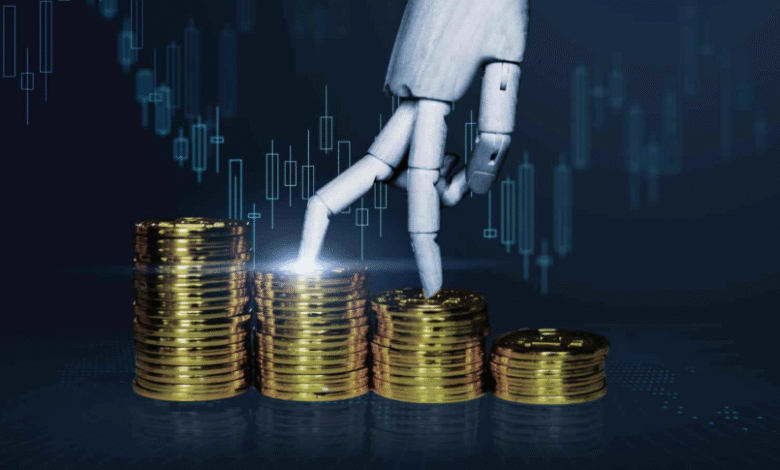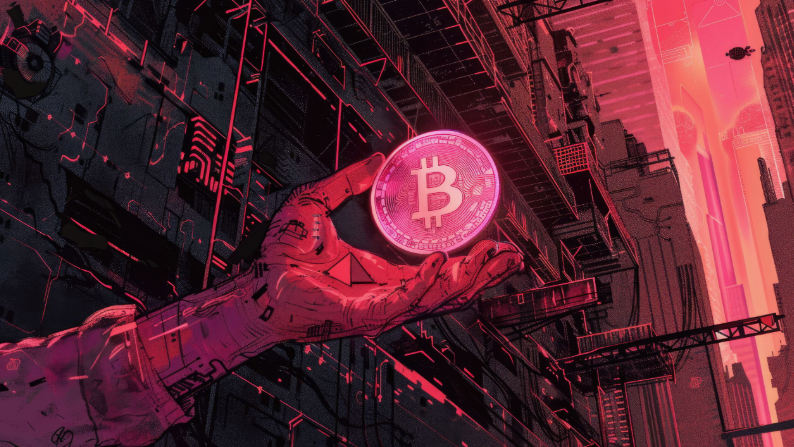Top Altcoins Building in the AI Sector 2025 Investment Guide

The intersection of artificial intelligence and blockchain technology has created unprecedented opportunities for investors seeking exposure to the next technological revolution. As we navigate through 2025, the top altcoins building in the AI sector are positioning themselves as the backbone of a decentralized, intelligent future. These innovative projects are not just riding the AI wave—they’re building the infrastructure that will power autonomous agents, decentralized computing networks, and intelligent blockchain ecosystems.
The AI cryptocurrency market has witnessed explosive growth, with the total market capitalization hovering between $24-27 billion by mid-2025. This rapid expansion reflects the growing recognition that blockchain and AI represent a powerful combination capable of transforming industries from finance to healthcare, gaming to data analytics. For investors looking to capitalize on this convergence, understanding which altcoins are genuinely building meaningful AI solutions versus those riding hype cycles is crucial for making informed investment decisions.
AI Cryptocurrency Landscape in 2025
The artificial intelligence crypto sector has matured significantly since its early speculative phase. Unlike the meme-driven rallies of previous years, today’s top altcoins building in the AI sector are distinguished by their real-world applications, robust technical foundations, and clear value propositions. The market has evolved from purely speculative investments to projects delivering tangible AI services through blockchain infrastructure.
Current market dynamics show that AI-focused crypto tokens have experienced both tremendous growth and notable volatility. After the explosive gains of early 2023, the sector underwent a consolidation phase throughout 2024, allowing genuine builders to separate themselves from speculative projects. This maturation process has created a more sustainable foundation for long-term growth and adoption.
The democratization of AI through blockchain technology represents a fundamental shift away from centralized AI development dominated by Big Tech companies. Decentralized AI platforms are enabling smaller teams worldwide to contribute to AI development while receiving funding through community-driven token governance systems. This paradigm shift is creating new opportunities for innovation and value creation that traditional venture capital models cannot match.
Leading AI Altcoins Transforming the Digital Economy
Artificial Superintelligence Alliance (FET)
The Artificial Superintelligence Alliance represents one of the most significant developments in the AI crypto space, formed through the strategic merger of three pioneering projects: Fetch.ai, SingularityNET, and Ocean Protocol. This alliance has created a comprehensive ecosystem for decentralized AI development that challenges existing paradigms while prioritizing openness, ethics, and community involvement.
Fetch.ai brings autonomous AI agents capable of performing complex tasks and facilitating digital economies. These agents can negotiate, transact, and collaborate without human intervention, creating efficient markets for services ranging from transportation to data analytics. The platform’s unique approach to multi-agent systems enables the creation of sophisticated AI ecosystems that can adapt and evolve based on user needs and market conditions.
SingularityNET contributes a decentralized marketplace for AI services, allowing developers to monetize their AI algorithms while providing users access to a vast array of artificial intelligence capabilities. The platform’s democratic approach to AI development ensures that the benefits of artificial intelligence are distributed broadly rather than concentrated in the hands of a few tech giants.
Ocean Protocol completes the alliance by providing secure, privacy-preserving data sharing capabilities essential for training AI models. The protocol enables data owners to monetize their information while maintaining control over privacy and usage rights, creating sustainable data economies that fuel AI development.
Render Network (RNDR)
Render Network has established itself as a critical infrastructure provider for AI development by creating a decentralized marketplace for GPU computing power. The platform connects node operators with unused GPU resources to users requiring computational power for machine learning, generative AI, and 3D rendering applications.
The network’s approach to distributed computing addresses one of the most significant bottlenecks in AI development: access to affordable, scalable computing resources. By democratizing access to high-performance computing, Render Network enables smaller AI developers to compete with well-funded corporations while providing GPU owners with new revenue streams.
Recent developments in the Render ecosystem include partnerships with major studios and AI companies, expanding use cases beyond traditional rendering to include AI model training and inference. The platform’s native token economics create sustainable incentives for both compute providers and consumers, ensuring long-term network growth and stability.

Bittensor (TAO)
Bittensor represents a revolutionary approach to AI development through its decentralized neural network architecture. The platform creates incentive mechanisms for AI developers to contribute to a global, collaborative artificial intelligence system where the best models are rewarded through a consensus mechanism.
The network’s unique proof-of-intelligence consensus mechanism ensures that computational resources are directed toward producing valuable AI outputs rather than solving arbitrary mathematical problems. This approach creates a more efficient and purposeful use of computing power while fostering innovation in AI model development.
Bittensor’s subnet architecture allows for specialized AI applications to develop within the broader network, creating focused ecosystems for specific use cases such as text generation, image processing, or predictive analytics. This modular approach enables rapid innovation and experimentation while maintaining network security and coherence.
NEAR Protocol (NEAR)
NEAR Protocol has positioned itself as a leading blockchain platform for AI applications through its scalable, user-friendly infrastructure and growing ecosystem of AI-focused projects. The platform’s sharding technology enables high throughput and low costs, making it ideal for AI applications that require frequent interactions with blockchain systems.
The protocol’s emphasis on developer experience and easy onboarding has attracted numerous AI projects seeking blockchain integration. NEAR’s account abstraction features enable AI agents to interact with blockchain systems seamlessly, removing traditional barriers to AI-blockchain integration.
Recent developments include partnerships with AI companies and the launch of AI-focused incubator programs, positioning NEAR as a central hub for AI innovation in the blockchain space. The platform’s native token serves multiple functions, from network security to governance, creating value capture mechanisms aligned with network growth.
Emerging AI Altcoins With High Growth Potential
Graph (GRT)
The Graph protocol has evolved beyond simple blockchain data indexing to incorporate AI-powered analytics and query optimization. The platform’s decentralized network of indexers provides essential data infrastructure for AI applications requiring real-time blockchain data access.
Recent protocol upgrades have introduced machine learning capabilities that optimize query performance and predict data access patterns. These AI enhancements improve user experience while reducing costs for applications requiring complex blockchain data analysis.
The Graph’s role in the AI ecosystem extends beyond data provision to include AI model hosting and inference capabilities. This expansion positions the protocol as a comprehensive infrastructure provider for AI applications built on blockchain technology.
Internet Computer (ICP)
Internet Computer Protocol has distinguished itself through its unique approach to hosting AI applications directly on-chain. Unlike other blockchains that rely on external infrastructure, ICP enables AI models to run entirely within the blockchain environment, ensuring true decentralization and censorship resistance.
The platform’s ability to serve web content directly from smart contracts eliminates the need for traditional cloud providers, reducing costs and increasing security for AI applications. This capability is particularly valuable for AI services requiring high availability and resistance to censorship.
Recent developments include AI-focused developer tools and partnerships with AI research institutions, expanding the platform’s capabilities and developer ecosystem. ICP’s unique architecture enables new categories of AI applications that were previously impossible on other blockchain platforms.
Virtuals Protocol
Virtuals Protocol represents the next generation of AI agent platforms, focusing on creating immersive, interactive AI personalities for various applications including gaming, social media, and virtual worlds. The platform’s approach to AI agent development emphasizes personality, creativity, and emotional intelligence rather than purely functional capabilities.
The protocol’s tokenomics create sustainable revenue streams for AI agent creators while providing users with access to diverse AI personalities and capabilities. This marketplace model enables rapid innovation and experimentation in AI agent development while ensuring quality through community governance mechanisms.
Virtuals Protocol’s integration with virtual and augmented reality platforms positions it at the forefront of the metaverse-AI convergence, creating new opportunities for immersive AI experiences and social interactions.
Investment Strategies for AI Altcoins
Fundamental Analysis Considerations
When evaluating top altcoins building in the AI sector, investors should focus on several key factors growth than those attempting to compete directly with established players.
Read More: Top Altcoins Building in the AI Sector 2025 Investment Guide
Risk Management Approaches
The AI cryptocurrency sector’s high growth potential comes with corresponding risks that investors must carefully manage. Volatility in AI tokens often exceeds that of broader cryptocurrency markets, requiring position sizing strategies that account for potential significant price swings.
Technology risk represents a major concern, as many AI crypto projects are building cutting-edge technology that may face unforeseen technical challenges or competition from traditional tech companies. Diversification across multiple AI projects and use cases can help mitigate concentration risk while maintaining exposure to the sector’s growth potential.
Regulatory uncertainty surrounding both AI development and cryptocurrency creates additional layers of risk that investors must monitor. Projects building in jurisdictions with clear regulatory frameworks or those proactively engaging with regulators may offer better risk-adjusted returns.
Portfolio Allocation Guidelines
Financial advisors typically recommend limiting exposure to high-risk, high-reward sectors like AI cryptocurrency to 5-10% of total portfolio value. Within this allocation, further diversification across different AI use cases, market capitalizations, and development stages can optimize risk-adjusted returns.
Large-cap AI tokens like those in the Artificial Superintelligence Alliance offer more stability and liquidity but potentially lower growth rates. Mid-cap projects like Render Network and Bittensor provide balanced risk-reward profiles, while smaller emerging projects offer higher growth potential with correspondingly higher risks.
Regular rebalancing becomes particularly important in the rapidly evolving AI crypto space, as project fundamentals and market conditions can change quickly. Investors should establish clear criteria for position adjustments based on development milestones, partnership announcements, and competitive positioning changes.
Technical Innovation and Real-World Applications
The top altcoins building in the AI sector are distinguished by their practical applications and technical innovations that solve real-world problems. Unlike purely speculative cryptocurrencies, these projects are building infrastructure and services that businesses and consumers can actually use today.

Decentralized computing networks like Render and Bittensor are already processing real workloads for AI training and inference, demonstrating the viability of blockchain-based AI infrastructure. These networks provide cost-effective alternatives to traditional cloud computing while offering benefits like censorship resistance and community ownership.
AI agent platforms are enabling new forms of automation and economic activity, from autonomous trading bots to intelligent personal assistants. The ability to create programmable, trustless AI agents opens possibilities for new business models and economic relationships that were previously impossible.
Data marketplace innovations are creating new value streams for data owners while providing AI developers with access to high-quality training datasets. These platforms address privacy concerns while enabling data monetization, creating sustainable ecosystems for AI development.
Market Trends and Future Outlook
The AI cryptocurrency sector is experiencing a fundamental shift from speculation to utility, with successful projects demonstrating clear value propositions and growing user bases. This maturation process is creating more sustainable growth patterns and attracting institutional interest from both crypto and AI sectors.
Integration between AI and decentralized finance (DeFi) represents a significant growth opportunity, with AI agents beginning to participate in lending, trading, and yield farming activities. This convergence could create new financial products and services that leverage both AI intelligence and DeFi innovation.
The rise of AI agents as economic actors creates entirely new categories of blockchain applications. These autonomous entities can own assets, make decisions, and transact independently, enabling new forms of economic organization that blur the lines between human and artificial intelligence participation.
Regulatory clarity is gradually emerging in major jurisdictions, providing more certainty for AI crypto projects and potentially accelerating institutional adoption. Projects that proactively address regulatory requirements while maintaining decentralization principles are likely to benefit from this trend.
Competitive Analysis and Market Positioning
The AI cryptocurrency landscape is becoming increasingly competitive, with projects needing to demonstrate clear differentiation and sustainable competitive advantages. First-mover advantages are important but not insurmountable, as seen by the success of later entrants that offer superior technology or user experience.
Network effects play a crucial role in AI crypto success, with platforms benefiting from larger developer communities, more data sources, and broader adoption. Projects that successfully build and maintain vibrant ecosystems are more likely to achieve long-term success than those relying solely on technical superiority.
Partnership strategies are becoming increasingly important as AI crypto projects seek to integrate with existing AI and blockchain ecosystems. Strategic alliances with major tech companies, academic institutions, or other blockchain projects can provide credibility, resources, and market access.
Interoperability is emerging as a key differentiator, with projects that can seamlessly integrate with multiple blockchain networks and AI platforms gaining advantages over more isolated solutions. Cross-chain compatibility and API standardization are becoming increasingly important for long-term success.
Summary
The top altcoins building in the AI sector represent more than just investment opportunities—they’re building the foundational infrastructure for a decentralized, intelligent future. From the comprehensive ecosystem of the Artificial Superintelligence Alliance to the specialized computing networks of Render and Bittensor, these projects are solving real problems while creating new possibilities for AI development and deployment.
As the AI cryptocurrency sector matures, the distinction between speculative tokens and genuine AI infrastructure becomes increasingly clear. The projects highlighted in this analysis have demonstrated their commitment to building practical solutions while maintaining the decentralized principles that make blockchain technology revolutionary.
For investors seeking exposure to the convergence of AI and blockchain technology, the top altcoins building in the AI sector offer compelling opportunities with the potential for significant returns. However, success in this rapidly evolving space requires careful research, risk management, and a long-term perspective that recognizes both the tremendous potential and inherent challenges of emerging technology sectors.
FAQs
Q: What makes an altcoin qualify as one of the top altcoins building in the AI sector?
A: Top AI altcoins combine real AI functionality with blockchain infrastructure, demonstrating practical applications, strong technical teams, active development, and growing user adoption rather than just AI-themed marketing.
Q: How do I evaluate the legitimacy of AI cryptocurrency projects?
A: Focus on technical documentation, team credentials, working products, partnership announcements, and community engagement. Avoid projects making unrealistic claims or lacking transparent development progress.
Q: What are the main risks of investing in AI altcoins?
A: Key risks include high volatility, technology failure, regulatory uncertainty, competition from traditional tech companies, and the speculative nature of emerging AI applications in blockchain environments.
Q: Which AI altcoins have the strongest partnerships with major companies?
A: The Artificial Superintelligence Alliance, Render Network, and NEAR Protocol have established notable partnerships with major studios, AI companies, and tech platforms, providing credibility and growth opportunities.
Q: How does the AI crypto market compare to traditional AI stocks?
A: AI crypto offers higher growth potential and direct exposure to decentralized AI infrastructure, but comes with greater volatility and regulatory uncertainty compared to established AI companies with proven revenue streams.
